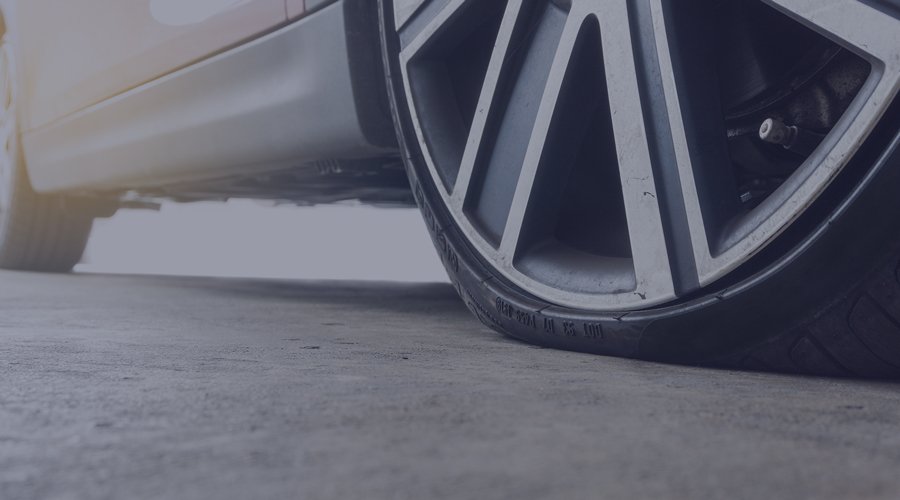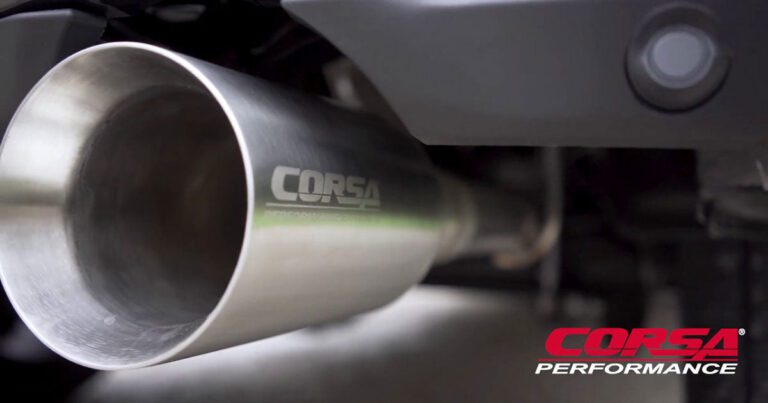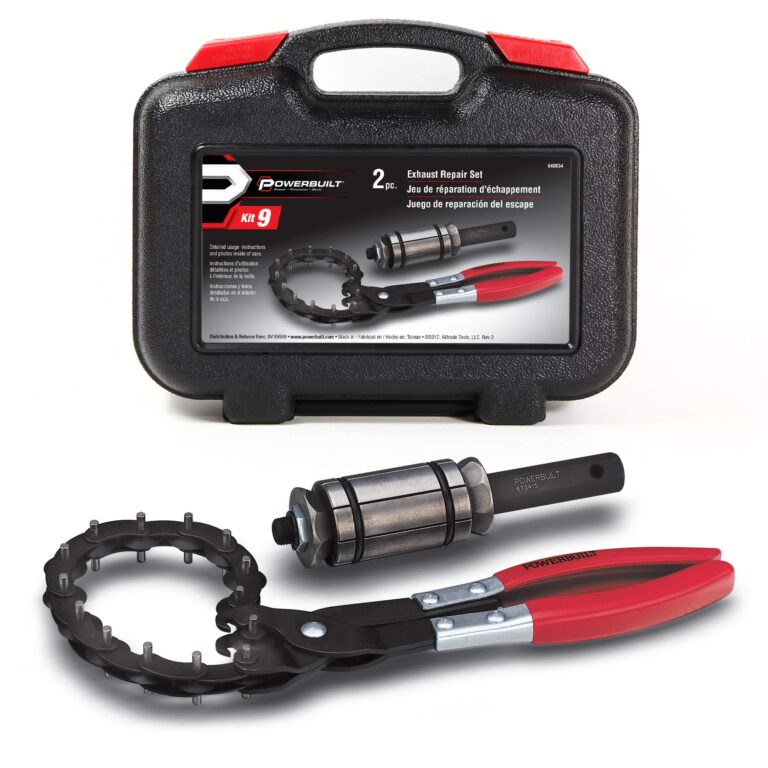Driving With Low Tire Pressure: Danger on the Road
Driving with low tire pressure is dangerous and can lead to a loss of vehicle control. It is important to constantly monitor and maintain proper tire pressure for safe driving on the road.
Having the correct tire pressure is crucial for a variety of reasons. When your tires are under-inflated, it can result in decreased handling, reduced fuel efficiency, and increased tire wear. Additionally, low tire pressure can cause overheating and failure of the tire, increasing the risk of a blowout.
This can be especially dangerous at high speeds or in adverse weather conditions. To ensure your safety and the longevity of your tires, it is important to regularly check and maintain proper tire pressure.
How Low Tire Pressure Affects Your Driving Experience
Driving with low tire pressure can have several negative impacts on your overall driving experience. One of the most noticeable effects is an increased stopping distance. When your tires are underinflated, it takes longer for your vehicle to come to a complete stop, which can be dangerous in emergency situations.
In addition to that, low tire pressure can also lead to reduced vehicle handling. With less air pressure in your tires, your car may feel sluggish and unresponsive when making turns or maneuvering around corners. This can affect your overall control and handling of the vehicle, potentially leading to accidents or loss of control.
Furthermore, driving with low tire pressure can result in decreased fuel efficiency. Underinflated tires create more rolling resistance, which means your engine has to work harder to propel the vehicle forward. This can lead to increased fuel consumption and ultimately cost you more money at the gas pump.
Potential Dangers Of Driving With Low Tire Pressure
Driving with low tire pressure can pose potential dangers and risks. One of the main concerns is the increased risk of blowouts. When tires are underinflated, they may not be able to support the weight of the vehicle properly, which can lead to a blowout while driving. Blowouts can be extremely dangerous, especially at high speeds, as they can cause the driver to lose control of the vehicle.
Another consequence of driving with low tire pressure is reduced tire life. When tires are not properly inflated, the tread wears unevenly, causing tires to wear out more quickly. This means that you’ll have to replace your tires more frequently, which can be costly.
Additionally, driving with low tire pressure can result in poor road traction. Underinflated tires have less contact with the road surface, which reduces their ability to grip the road. This can lead to longer stopping distances, reduced handling capabilities, and an increased risk of skidding or hydroplaning.
Decreased Gas Mileage
Decreased Gas Mileage
Impact on fuel efficiency
Driving with low tire pressure can have a significant impact on fuel efficiency. When tire pressure is lower than recommended, it creates more rolling resistance, which means the engine has to work harder to move the vehicle. This increased effort leads to higher fuel consumption and decreased gas mileage. Monitoring tire pressure regularly is crucial to maintain optimal fuel efficiency. Keeping tires properly inflated can improve gas mileage by up to 3%. Signs of decreased gas mileage include frequent visits to the gas station, reduced distance traveled per tank of fuel, and a decrease in overall fuel economy. Maintaining proper tire pressure not only saves money on fuel costs but also ensures a safer driving experience. Be sure to check tire pressure regularly and inflate them according to the manufacturer’s recommendations to maximize fuel efficiency.
Poor Vehicle Handling
Driving with low tire pressure can have a significant impact on your vehicle’s performance and handling. One of the major issues that arise from low tire pressure is poor vehicle handling. When tire pressure is below the recommended level, you may experience difficulty steering your car. The tires may not respond as quickly or accurately to your input, making it harder to navigate turns and corners. This can compromise your safety on the road. Additionally, driving with low tire pressure can lead to an unstable driving experience. You may notice that your vehicle feels shaky or wobbly, especially at higher speeds. This lack of stability can make driving more challenging and increase the risk of accidents. It’s important to be aware of the indications of poor vehicle handling due to low tire pressure, such as increased tire wear, uneven tread wear, or a pulling sensation while driving. Regularly checking and maintaining the proper tire pressure can help ensure optimal vehicle handling and a safer driving experience.
Visual Inspection Of Tires
Visual Inspection of Tires
Regular visual inspection of your tires is crucial to ensure safe driving and extend the lifespan of your tires. By visually inspecting your tires, you can catch any potential issues early on and prevent them from escalating into more serious problems.
Importance of regular visual inspection
- Identify signs of visible tire damage: Regularly examining your tires allows you to spot any visible damage, such as cuts, bulges, or punctures. Addressing these issues promptly can prevent accidents and blowouts on the road.
- Checking for signs of underinflation: Low tire pressure is a common problem that can lead to reduced fuel efficiency, decreased handling, and increased risk of tire failure. Visual inspection can help you identify if your tires appear deflated and need to be properly inflated.

Credit: forcebymojio.com
Understanding Tire Pressure Ratings
Understanding tire pressure ratings is crucial for safe driving. Determining the correct tire pressure for your vehicle is essential to maintain optimal performance and longevity. It is important to follow the manufacturer’s recommendations for tire pressure, as it may vary depending on the make and model of your vehicle.
Driving with low tire pressure can lead to decreased fuel efficiency, increased tire wear, and compromised handling and braking capabilities. Each vehicle type has different tire pressure ratings, which consider factors such as weight distribution and load capacity. It is essential to consult your vehicle’s manual or the sticker located on the driver’s door jamb to find the recommended tire pressure.
| Vehicle Type | Tire Pressure Rating |
|---|---|
| Sedans | 32-35 psi (pounds per square inch) |
| SUVs | 35-38 psi |
| Trucks | 35-40 psi |
| Performance Cars | 32-36 psi |
By adhering to the correct tire pressure, you can ensure a smoother ride, improved fuel efficiency, and increased safety on the road. Regularly check your tire pressure and adjust it as needed to maintain optimal performance for your vehicle.
Causes Of Low Tire Pressure
htmlLow tire pressure can lead to various problems while driving. There are several causes that can result in low tire pressure. One common cause is air leakage issues. Over time, tires can develop small punctures or have problems with the valve stem, causing air to slowly escape. Additionally, extreme temperature changes can also affect tire pressure. Cold weather, in particular, can cause the air inside the tire to compress, resulting in lower pressure. Another cause of low tire pressure is aging tires. As tires get older, the rubber becomes less flexible and more prone to leaks and gradual air loss. It is crucial to regularly check tire pressure and address any issues promptly to ensure safe driving conditions.
The Dangers Of Overinflating Your Tires
Driving with low tire pressure can be dangerous and pose various risks to both your safety and the condition of your vehicle. Overinflating your tires, for instance, can have detrimental effects that should not be ignored.
One of the dangers of overinflating your tires is reduced traction on the road. When your tires are overinflated, the contact patch between the tire and the road decreases. This reduces the tire’s ability to grip the road surface, especially in wet or slippery conditions, potentially leading to loss of control.
Another risk is increased risk of tire blowouts. Overinflated tires experience excessive pressure, causing strain on the tire walls. This can result in a tire blowout, which can be sudden, unexpected, and dangerous.
Additionally, overinflating your tires can have an impact on vehicle handling and fuel efficiency. Overinflated tires may lead to a harsh and uncomfortable ride, affecting the vehicle’s ability to absorb road imperfections. Moreover, it can also negatively affect fuel efficiency, as overinflated tires increase rolling resistance, requiring more energy to move the vehicle.
Regularly monitoring and maintaining the proper tire pressure is essential for your safety and the performance of your vehicle. Make sure to follow the manufacturer’s recommended tire pressure guidelines and check your tire pressure regularly to avoid these risks.
Regular Tire Pressure Checks
Regular tire pressure checks are important for maintaining optimal performance and safety on the road. Keeping your tire pressure at the recommended level ensures better fuel efficiency, enhanced traction, and extended tire life. One simple way to check your tire pressure is by using a tire pressure gauge. This handy tool allows you to measure the air pressure inside your tires accurately.
Experts recommend checking your tire pressure at least once a month to ensure it meets the manufacturer’s specifications. However, it’s also a good idea to inspect your tires before long trips or during extreme weather conditions, as these factors can affect tire pressure. Remember, improper tire pressure can lead to increased wear and tear, reduced stability, and even the risk of a tire blowout. By regularly monitoring and maintaining proper tire pressure, you can enjoy a smoother and safer driving experience.
Proper Tire Inflation
Proper tire inflation is essential for maintaining optimal driving performance and safety. It not only extends the lifespan of your tires but also improves fuel efficiency and enhances overall vehicle handling. To ensure that your tires are inflated correctly, follow these steps:
- Refer to your vehicle manufacturer’s guidelines or check the label inside the driver’s side door jamb for the recommended tire pressure.
- Use a reliable tire pressure gauge to measure the current tire pressure.
- If the tire pressure is below the recommended range, add air carefully using an air compressor or visit a gas station with an air pump.
- Avoid overinflating the tires by regularly checking the pressure with a gauge.
- Recheck the tire pressure after inflating and ensure that it matches the recommended range.
- Remember to check the tire pressure regularly, especially during changes in temperature, as tire pressure can fluctuate.
Understanding the ideal tire pressure range for your vehicle and monitoring tire pressure throughout the year are crucial steps in ensuring a safe and comfortable driving experience.
Understanding Tire Pressure Monitoring Systems (tpms)
Understanding Tire Pressure Monitoring Systems (TPMS) is crucial for safe and efficient driving. TPMS is designed to monitor and alert drivers when their tire pressure is low, helping to prevent accidents caused by underinflated tires. A brief overview of TPMS functionality reveals its ability to constantly monitor tire pressure and provide real-time information to the driver, enabling them to take immediate action.
One of the major benefits of TPMS is improved safety on the road. Properly inflated tires ensure better traction, handling, and braking, reducing the risk of accidents. Additionally, maintaining optimal tire pressure helps optimize fuel efficiency and prolong tire life, resulting in cost savings for the driver.
Regular maintenance and calibration of TPMS is crucial to ensure accurate readings. It is essential to check the system regularly, especially when seasonal changes in temperature can affect tire pressure. Ignoring TPMS alerts can lead to decreased tire performance, increased fuel consumption, and potential tire failure.
Frequently Asked Questions On Driving With Low Tire Pressure
Is It Ok To Drive With Low Tire Pressure?
It is not okay to drive with low tire pressure. Low tire pressure can cause poor handling, increased tire wear, and decreased fuel efficiency. It can also lead to tire blowouts and accidents. Regularly check and maintain proper tire pressure to ensure safe driving conditions.
How Long After The Low Tire Pressure Can You Drive?
You should not drive for more than a few miles after noticing low tire pressure. It is crucial to resolve the issue and inflate the tires to the recommended level as soon as possible for safe driving.
Can I Drive On 28 Psi?
Yes, you can drive with 28 psi tire pressure. However, it is important to check your vehicle’s recommended pressure to ensure safety and optimal performance. Regular tire maintenance is crucial for your vehicle’s handling and fuel efficiency.
What Does Driving With Low Tire Pressure Feel Like?
Driving with low tire pressure feels like a bumpy ride with less control. The vehicle may sway, lack responsiveness, and have poor traction. It’s important to regularly check tire pressure to ensure proper inflation for a safer and smoother driving experience.
Conclusion
Driving with low tire pressure can have serious consequences for your safety and vehicle performance. It can lead to reduced fuel efficiency, premature tire wear, and even tire blowouts. Regularly checking your tire pressure and maintaining proper inflation levels is vital.
By doing so, you can ensure optimal handling, better traction, and ultimately a smoother and safer driving experience. Neglecting tire pressure can be costly in the long run, so take the necessary steps to keep your tires properly inflated. Stay safe on the road and enjoy improved fuel economy by keeping an eye on your tire pressure.








